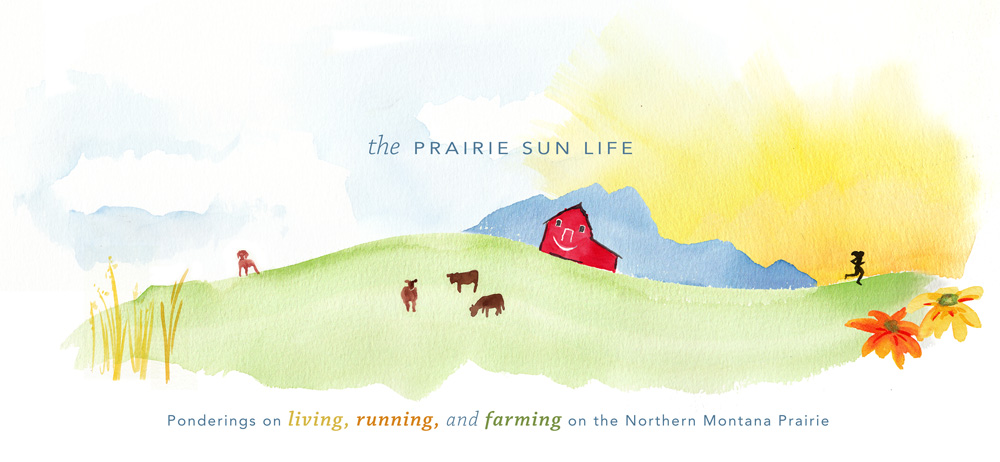Howdy, Folks! One thing I’ve learned since moving to Montana several years ago is that nothing beats a rodeo on a Saturday night! This past Saturday, that’s just want Jeff and I were off to do, thanks to a lovely Christmas gift of rodeo tickets. We attended the Montana PRCA Circuit Finals at the Four Seasons Arena in Great Falls.
Rodeo is deeply rooted in Western tradition of cattle ranching and wrangling. Cowboys depended on roping and riding skills when tending to their herds. Even though modern technology has greatly reduced the need for some of these traditional cowboy skills, some ranchers still rope and ride to this day. On our ranch, the only “riding” we do is on four-wheelers and in pickups, and while I’m doubtful that Four-Wheeler Calf-Wrangling will make a rodeo debut any time soon, it’s still enjoyable to take in a rodeo and relish in this great Western tradition.
Events featured at the rodeo included: Saddle Bronc Riding, Bareback Bronc Riding, Tie-Down Roping, Team Roping, Steer Wrestling, Barrel Racing, and Bullriding. The bull and bronc riding events are always dynamic and exciting, but I also like Barrel Racing as the only women’s rodeo event, and Tie-Down Roping.
Here’s a really nice photo essay of the rodeo from the Great Falls Tribune—check it out!
I like Tie-Down Roping because it is a great combination of strength, skill, and animal handling. The cowboy must ride in on his horse and leaves the chute at the same time as the calf he is to rope leaves an adjacent chute. He must lasso the calf while riding his horse, then jump off the horse, wrestle the calf onto it’s back and tie three of it’s feet together. The cowboy uses a separate rope to tie the feet from the lasso he uses to still the calf in the first place—the lasso is attached to the saddle on the horse. So, when the cowboy jumps off the horse to tie the calf’s feet, the trained horse will actually take slow steps backward to keep the lasso rope taut, which keeps the calf in one spot so the cowboy can complete his job. It’s a little difficult to explain, but I am always so impressed by the skill of the horses in this event and the training that must have gone into getting them to be competition-ready.
Why would this skill be useful on a ranch? In this case, it seems like if your cattle and calves were in an open range or pasture situation, a cowboy could use this skill to isolate a specific calf if that calf needed some sort of individual attention, such as medication. I find this rodeo event to be a useful, elegant, and efficient skill if one were proficient. It can take considerable time to round up a single calf at pasture using just a four-wheeler.
Rodeos are always fun, and while this was not my first rodeo (hardee har har har!), it was the biggest and one of the most entertaining rodeos I have attended. Other rodeos I have attended in Montana were small-town summer rodeos, which are delightful in their own way, and the annual Montana State University Rodeo. The latter was enjoyable because it was a competition between some of the schools and universities in the area, and I can always get behind the Bobcats. Most of all, rodeo is best enjoyed when attended with family and friends. I had a great time attending with Jeff—it actually was our first rodeo together, and I’m sure it wasn’t the last!
Here's some photos I took from the rodeo, which are much less professional than the ones in the Tribune essay from above, but still kind of fun.
 |
| More bronc riding. |
 |
| Team roping in action. |
 |
| Rodeo clown (in barrel) and dummy Homer Simpson propped up by a broom, awaiting the bullriding. |
 |
| Cowboys waiting to ride bulls and others prepare to open the gate... |
 |
| The gate is opened while the men get out of the way in preparation for the ride! |
 |
| And that's what bullriding looks like! Trust me, it's much, much more exciting in person! |



Darn, I was in Great Falls on Tuesday and it ended Sunday!
ReplyDeleteYou missed a great show! Some other time perhaps. :)
Delete